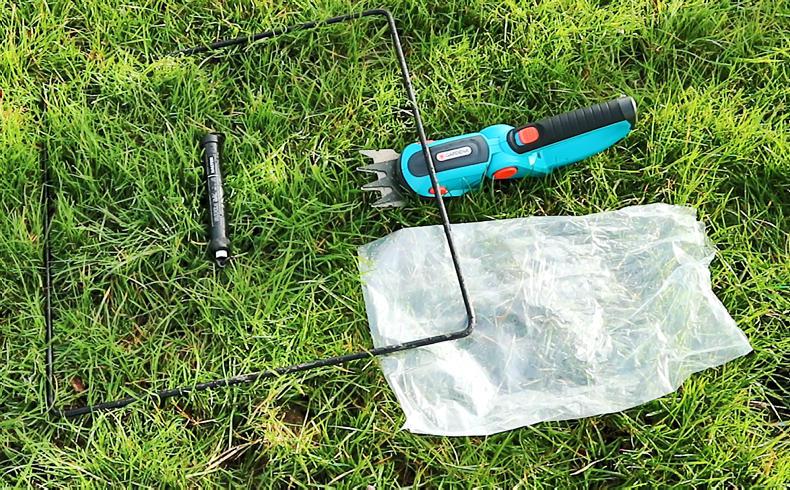Last week we went through the steps involved in measuring grass using the plate meter. This week, we look at another method – the cut and weigh method. For this process you will need a quadrat, a portable scales, a plastic bag and a garden shears. A quadrat is a simple piece of equipment, consisting of a square frame which will outline an area of 0.25m2 (0.5m x 0.5m) to be measured. The plastic bag is used to hold the grass cuttings so a standard food bag will suffice. A portable scales and garden shears can also be purchased in most hardware stores.
A - The plastic bag should be weighed prior to weighing the grass. The weight may be minimal, but including the weight of a 50g (0.05kg) bag would add an extra 320kg DM/ha to the result of your sample. The weight of the plastic bag will be subtracted from the sample weight at the end.
B - A sample of grass from the paddock must be obtained. To pick an area of grass to sample, the quadrat should be thrown over your shoulder randomly. The sample taken should represent the average quantity and quality of grass in the paddock, so if the quadrat lands on a bare or heavy patch of grass, it should be re-thrown.

When you are satisfied that the quadrat is outlining an area representative of the entire paddock, then the grass should be cut. Excess water should be knocked of the grass prior to cutting. Using the garden shears, cut the grass to a height of 4cm – the height which cattle will graze the grass to. Once complete, collect the grass cuttings and place into the plastic bag. The area may need to be cut two or three times to ensure all of the grass is obtained. Once all of the grass cuttings are in the bag, weigh the sample and record the weight in kilogrammes.

Once you have the weight of the grass sample, a very simple calculation can be made to estimate the kilogrammes of dry matter (DM) in your paddock:
(Weight of grass cut minus weight of bag) x DM% of grass x 40000 (the number of quadrats in a hectare) and then multiply this figure by the number of hectares in your paddock.
For example, if the grass sample minus the bag weight was 0.08kg (picture 4) and the DM% of the grass is 16% (see table 1 for DM% values) and the size of your paddock is 1.5ha, then:
0.08kg x 0.16 (16%) x 40000 = 512kg DM/ha x 1.5ha = 768kg DM/ha in your paddock (see table 2).

